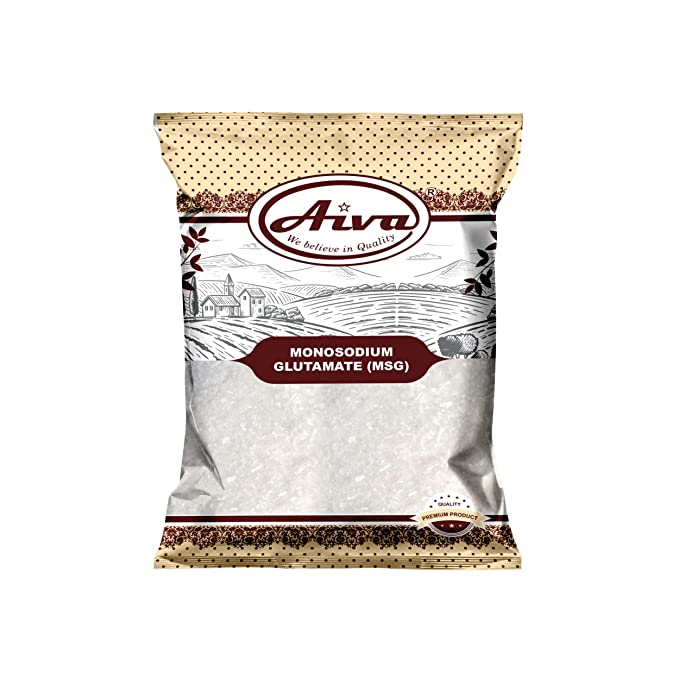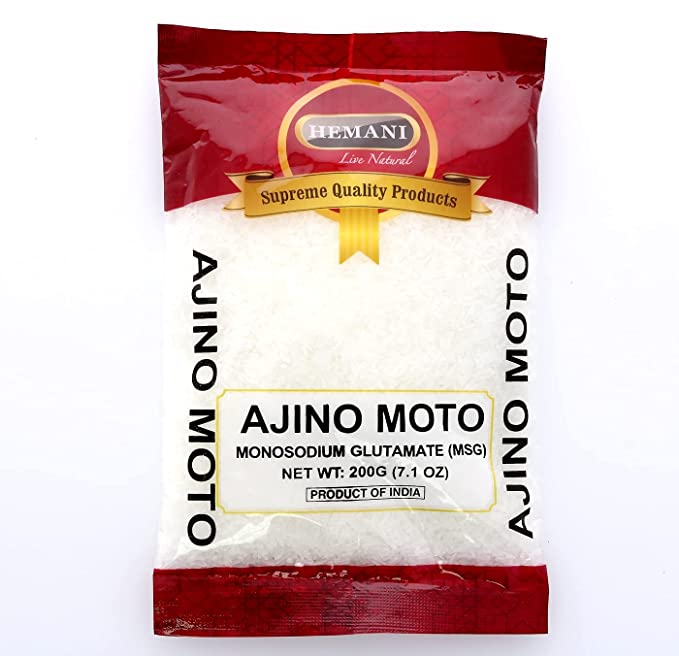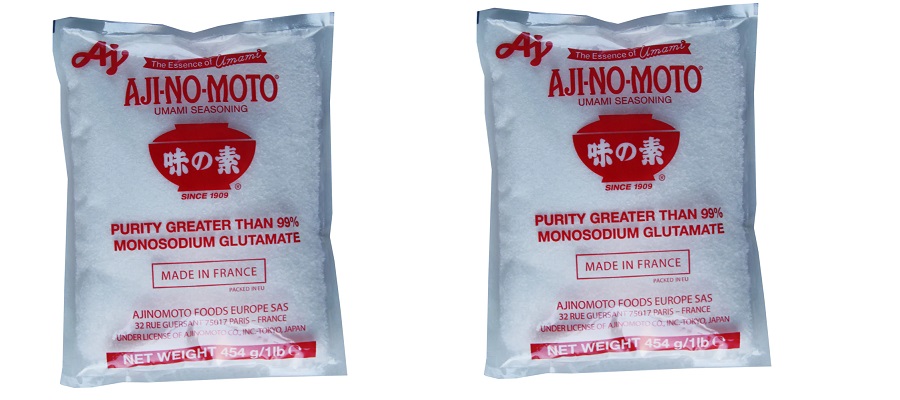Monosodium glutamate (MSG) is a flavor enhancer commonly used in the food industry to enhance the taste of various dishes. It is the sodium salt of glutamic acid, which is an amino acid found naturally in many foods. If you're searching for sellers of Monosodium Glutamate (MGM), click here.
MSG is derived through a process of fermentation, usually from sources like sugar cane, sugar beets, or molasses. It has been used for decades in Asian cuisine, particularly in dishes from China and Japan, where it is known as "Ajinomoto."
| Attribute | Description |
|---|---|
| Name | Monosodium Glutamate (MSG) |
| E Number | E621 |
| Chemical Formula | C5H8NNaO4 |
| Appearance | White crystalline powder |
| Taste | Umami (savory) taste that enhances the flavor of food |
| Usage | Used as a flavor enhancer in various foods and food products, especially in Asian cuisine |
| Natural or Synthetic | Monosodium glutamate can be produced through the fermentation of certain vegetables or through a chemical synthesis process. The majority of commercially available MSG is synthetically produced. |
| Function | Enhances the natural flavors of food, particularly umami taste |
| Sodium Content | Contains approximately 12% sodium by weight |
| Controversies and Sensitivities | Some individuals may experience sensitivity or adverse reactions to MSG, known as "MSG symptom complex" or "Chinese restaurant syndrome." However, scientific studies have not consistently confirmed a direct link between MSG and these symptoms. Individuals with specific sensitivities or health conditions may choose to avoid or limit consumption of MSG. It is important to note that MSG is considered safe for consumption by regulatory authorities when consumed within recommended limits. |
When added to foods, MSG enhances the savory or umami taste, which is often described as a meaty, rich, or brothy flavor. It does not have a specific taste of its own but intensifies the existing flavors in a dish. This property makes it a popular ingredient in soups, sauces, snacks, processed meats, and many other savory food products.
MSG has been the subject of some controversy and misconceptions. Some people claim to experience symptoms such as headaches, flushing, or sweating after consuming foods containing MSG, a condition known as "Chinese restaurant syndrome." However, scientific studies have failed to consistently demonstrate a direct link between MSG and these symptoms, and most people can consume MSG without any adverse effects.
In many countries, including the United States, MSG is considered safe for consumption and is recognized as a Generally Recognized as Safe (GRAS) ingredient by the U.S. Food and Drug Administration (FDA). However, it is still a good practice for food manufacturers to list MSG as an ingredient on food labels to inform consumers.
Why is Monosodium Glutamate (MGM) also called E621?

E621 is the European food additive number for monosodium glutamate (MSG). The European Union has a system of numbering food additives known as the E number system. Each food additive is assigned a unique E number, which provides a standardized way of identifying additives across Europe.
The E number system was established to ensure the safety and regulation of food additives used in the European market. The numbers are used on food labels to indicate the presence of specific additives, making it easier for consumers to identify them.
In the case of MSG, the E number E621 is assigned to monosodium glutamate. It is important to note that E621 specifically refers to the chemical compound monosodium glutamate and not other forms of glutamate or glutamic acid derivatives used as food additives. The E number system helps ensure consistency and clarity in labeling across different countries within the European Union.
How dangerous is E621 Monosodium glutamate (MSG) for humans?
Monosodium glutamate (MSG), also known as E621, has been extensively studied and is generally recognized as safe for consumption by the regulatory authorities in many countries, including the United States, European Union, and others. When consumed in normal amounts, MSG is considered safe for the majority of individuals.
There have been anecdotal reports of people experiencing symptoms such as headaches, flushing, or sweating after consuming foods containing MSG, a condition known as "Chinese restaurant syndrome" or "MSG symptom complex." However, scientific studies have failed to consistently demonstrate a direct link between MSG and these symptoms in the general population. The majority of individuals can consume MSG without experiencing any adverse effects.
In rare cases, some individuals may be sensitive to MSG and experience mild symptoms. These individuals are said to have a condition known as "MSG sensitivity" or "MSG intolerance." Symptoms, if present, are typically temporary and mild. If you suspect you have a sensitivity to MSG, it is advisable to consult a healthcare professional for proper evaluation and guidance.
It is worth noting that MSG is a source of sodium, and individuals on a low-sodium diet should be mindful of their overall sodium intake. Additionally, individuals with certain medical conditions, such as asthma, may be advised to exercise caution with MSG consumption, as it may trigger symptoms in some cases.
As with any food additive, it is important to consume MSG in moderation and be aware of your individual tolerance and dietary needs. If you have specific concerns or health conditions, consulting with a healthcare professional or a registered dietitian can provide personalized guidance.
What foods contain Monosodium glutamate (MSG) E621?
Monosodium glutamate (MSG) can be found in a variety of processed and packaged foods. Here are some examples of foods that commonly contain MSG:
- Soups and broths: Many canned or packaged soups, including chicken noodle soup, vegetable soup, and bouillon cubes, may contain MSG as a flavor enhancer.
- Snack foods: Flavored potato chips, corn chips, pretzels, and other savory snacks often contain MSG to enhance their taste.
- Processed meats: Sausages, hot dogs, deli meats, and cured meats may include MSG in their ingredient list.
- Seasonings and spice blends: Some seasoning mixes, such as seasoning salt, barbecue seasoning, and certain spice blends, may contain MSG.
- Frozen meals and ready-to-eat meals: Frozen dinners, microwaveable meals, and pre-packaged ready-to-eat meals may contain MSG to enhance their flavor.
- Salad dressings and sauces: Certain salad dressings, marinades, and sauces, including soy sauce, teriyaki sauce, and Worcestershire sauce, may contain MSG.
- Snack flavorings: Seasonings used to flavor popcorn, nachos, or other snack items at movie theaters, amusement parks, or snack bars might contain MSG.
- Fast food and restaurant dishes: Some fast food chains and restaurants use MSG as a flavor enhancer in their food preparations. It's worth noting that many restaurants now offer MSG-free options or indicate if MSG is used in their dishes.
It's important to read food labels and ingredient lists carefully if you want to avoid MSG or are sensitive to it. In some cases, food manufacturers may use alternative names for MSG, such as hydrolyzed vegetable protein, autolyzed yeast extract, or natural flavors, so it's helpful to be aware of these aliases as well.
Why is Monosodium Glutamate (MGM) famous in Asian cuisine?
Monosodium glutamate (MSG) is famous in Asian cuisine for its ability to enhance and intensify flavors, particularly the umami taste. Umami is considered the fifth basic taste, alongside sweet, sour, salty, and bitter. It is often described as a savory, meaty, or brothy flavor.
Asian cuisine has a long history of utilizing ingredients and cooking techniques that naturally accentuate umami flavors. MSG, with its ability to enhance umami taste, became a popular ingredient in many Asian dishes, helping to elevate their flavors to new heights. Here are a few reasons why MSG became famous in Asian cuisine:
Umami enhancement: Many traditional Asian ingredients such as soy sauce, miso, fermented fish products, and seaweed are naturally rich in glutamate, which is the primary component of MSG. By adding MSG, cooks can intensify the umami taste and create a more satisfying flavor profile in their dishes.
Balancing flavors: Asian cuisine often emphasizes the delicate balance of flavors, including sweet, sour, salty, and bitter. MSG acts as a flavor enhancer that harmonizes these taste elements, making the overall flavor more pronounced and well-rounded.
Food preservation: MSG has been used historically in Asian cultures as a way to preserve food due to its ability to enhance flavor and mask potential off-flavors that may develop during preservation or fermentation processes.
Culinary tradition and preference: MSG has been a part of Asian culinary tradition for many years, especially in countries like China and Japan. It has become ingrained in the cooking practices and flavor profiles of these cuisines, with chefs and home cooks incorporating MSG to achieve the desired taste.
It's important to note that while MSG is often associated with Asian cuisine, it is also used in various other cuisines around the world to enhance flavors. However, the historical use of MSG in Asian cooking and the emphasis on umami flavors have contributed to its fame in that particular culinary context.
What are the potential health effects of consuming Monosodium Glutamate (MGM)?
The potential health effects of consuming monosodium glutamate (MSG) have been a subject of debate and research. Here are some considerations regarding its potential effects:
- MSG sensitivity: Some individuals may experience a set of symptoms collectively known as "MSG symptom complex" or "Chinese restaurant syndrome." These symptoms can include headaches, flushing, sweating, chest tightness, and numbness or tingling in the face or neck. However, scientific studies have not consistently demonstrated a direct causal link between MSG and these symptoms. For those who believe they are sensitive to MSG, reducing or avoiding its consumption may be advisable.
- Asthma and allergic reactions: In rare cases, individuals with pre-existing asthma may experience asthma-like symptoms, such as wheezing or shortness of breath, after consuming MSG. Allergic reactions to MSG are extremely rare but have been reported. People with a known allergy to MSG should avoid its consumption.
- Sodium content: MSG is a source of sodium, and excessive sodium intake is associated with health concerns such as high blood pressure and cardiovascular issues. Individuals on a low-sodium diet or with existing health conditions should be mindful of their overall sodium intake, including MSG from various sources.
- Glutamate and brain function: Glutamate, the component of MSG responsible for its flavor-enhancing properties, is an important neurotransmitter in the brain. Some studies have explored potential associations between MSG consumption and neurological conditions, but the evidence is limited and inconclusive. MSG consumed in typical amounts is not considered a significant concern for brain health in the general population.
- It's important to note that regulatory authorities, such as the U.S. Food and Drug Administration (FDA) and the European Food Safety Authority (EFSA), consider MSG safe for consumption when used in normal amounts. They have classified it as Generally Recognized as Safe (GRAS) and established acceptable daily intake levels.
Individual tolerance to MSG can vary, and some people may be more sensitive to its effects than others. If you have specific health concerns or suspect sensitivity to MSG, it's advisable to consult a healthcare professional for personalized guidance and advice.
What's the difference between Monosodium Glutamate (MGM) sensitivity, allergies, and intolerance?
Understanding the differences between MSG sensitivity, allergies, and intolerance can help clarify the various reactions that individuals may experience in relation to monosodium glutamate (MSG):
- MSG Sensitivity: MSG sensitivity refers to individuals who experience symptoms after consuming MSG, such as headaches, flushing, sweating, or numbness/tingling. These symptoms are commonly referred to as "MSG symptom complex" or "Chinese restaurant syndrome." However, scientific studies have not consistently demonstrated a direct causal link between MSG and these symptoms, and the condition remains controversial. Sensitivity to MSG is generally considered to be a non-allergic reaction.
- Allergy to MSG: An allergic reaction to MSG is extremely rare. True allergies involve an immune system response to a particular substance. Allergic reactions to food typically involve symptoms like hives, itching, swelling, difficulty breathing, or gastrointestinal distress. As mentioned earlier, there are very few reported cases of true allergic reactions specifically to MSG.
- Intolerance to MSG: Intolerance refers to difficulty digesting or metabolizing a substance, leading to unpleasant symptoms. In the case of MSG, intolerance might involve experiencing digestive issues like bloating, diarrhea, or abdominal discomfort after consuming foods containing MSG. MSG intolerance is not related to an immune system response, as seen in allergies. However, it's worth noting that true MSG intolerance is relatively rare compared to other forms of food intolerance.
It's important to consult a healthcare professional if you suspect you have any of these conditions or experience adverse reactions after consuming MSG. They can help evaluate your symptoms, conduct appropriate testing, and provide personalized guidance and recommendations based on your specific situation.
How should I read food labels to identify Monosodium Glutamate (MGM) and its alternative names?
Reading food labels carefully can help identify monosodium glutamate (MSG) and its alternative names. Here are some tips to assist you:
Look for the ingredient list: The ingredient list is a key area to check for the presence of MSG or its alternative names. Manufacturers are required to list ingredients in descending order of their predominance by weight. Scan the list for terms related to MSG.
Search for "monosodium glutamate": Some products may explicitly list "monosodium glutamate" as an ingredient. If you see this term, it indicates the presence of MSG.
Check for alternative names: MSG can be listed under various alternative names. Here are some common terms to watch for:
- Glutamic acid
- Glutamate
- Monopotassium glutamate
- Calcium glutamate
- Monoammonium glutamate
- Magnesium glutamate
- Natrium glutamate
- Yeast extract
- Autolyzed yeast extract
- Hydrolyzed vegetable protein
- Hydrolyzed plant protein
- Textured protein
- Soy protein isolate
- Natural flavors (although MSG can be included in natural flavors, it is not always the case)
Be cautious with labels claiming "No MSG": Some products may label themselves as "No MSG" or "MSG-free." However, this does not guarantee the absence of glutamate or glutamic acid derivatives that can serve as flavor enhancers. Read the ingredient list to confirm.
Familiarize yourself with common MSG-containing foods: Be aware that certain food categories, such as packaged soups, processed meats, and flavored snacks, are more likely to contain MSG. Being mindful of these foods can help you pay closer attention to their labels.
Remember that if you have specific health concerns or are sensitive to MSG, it is advisable to consult with a healthcare professional or a registered dietitian for personalized guidance. They can provide additional insights and help you make informed choices regarding your diet.
How does Monosodium Glutamate (MGM) enhance flavor?

Monosodium glutamate (MSG) enhances flavor primarily by intensifying the umami taste, which is often described as a savory, meaty, or brothy flavor. Here's how MSG achieves this flavor enhancement:
- Umami receptor stimulation: Umami taste is recognized by specific taste receptors on our taste buds. These receptors are sensitive to the presence of glutamate, an amino acid that is naturally found in foods like meat, cheese, mushrooms, and tomatoes. MSG is a concentrated form of glutamate, and when consumed, it stimulates these umami receptors, amplifying the perception of savory flavors.
- Flavor synergy: MSG has the ability to enhance and round out the overall flavor profile of a dish. It doesn't have a distinctive taste of its own but works to enhance the existing flavors in the food. This flavor synergy occurs when MSG interacts with other taste components like sweet, salty, sour, and bitter, making the overall taste more balanced and enjoyable.
- Increased salivation: MSG can stimulate the production of saliva, which can further contribute to the perception of enhanced flavors. Increased salivation helps distribute the flavors across the taste buds, intensifying the sensory experience.
- Aromatics enhancement: MSG can also amplify the aromas and fragrance of foods, making them more appealing. This is particularly noticeable in dishes like soups, stews, and sauces, where the aroma plays a significant role in overall flavor perception.
It's important to note that while MSG can enhance the umami taste and overall flavor of foods, it does not create new flavors or alter the inherent qualities of the ingredients. It simply intensifies the existing taste elements. This is why it is commonly used in savory dishes, soups, sauces, snacks, and processed meats to elevate their flavors and make them more appealing to the palate.
Can Monosodium Glutamate (MGM) be found in unexpected foods?
Yes, monosodium glutamate (MSG) can be found in unexpected foods beyond those typically associated with its usage. While it is commonly added to savory and processed foods for flavor enhancement, it can also be present in other products. Here are some examples of unexpected foods where MSG may be found:
- Packaged and processed foods: Aside from soups, sauces, and snacks, MSG can be present in a variety of packaged and processed foods, including frozen meals, ready-to-eat meals, flavored rice and pasta mixes, processed meats, and even certain canned vegetables or vegetable broths.
- Seasoning mixes and condiments: Some seasoning mixes, such as seasoning salts, bouillon cubes, and spice blends, may contain MSG. Additionally, certain condiments like salad dressings, barbecue sauces, ketchup, and soy sauce may include MSG as a flavor enhancer.
- Deli and cured meats: Processed meats like sausages, hot dogs, deli meats, and cured meats may contain MSG. It is often used to enhance their flavor and improve taste consistency.
- Snack flavorings: Snacks like flavored popcorn, nachos, or even seasoned nuts sold at movie theaters, amusement parks, or snack bars may contain MSG as part of their flavorings.
- Restaurant and fast-food dishes: Some restaurants and fast-food chains may use MSG in their food preparations to enhance flavors. While many establishments have become more transparent about MSG usage, it is still advisable to check with the restaurant or review their ingredients if you are concerned about MSG.
- Some vegetarian or vegan products: Certain meat substitutes or vegetarian/vegan products may contain MSG to enhance their flavor and mimic the taste of meat.
It's important to read food labels and ingredient lists carefully to identify the presence of MSG or its alternative names. Additionally, being aware of potential sources of MSG can help you make informed choices and cater to your dietary preferences or sensitivities.
What are Monosodium Glutamate's chemical attributes?
Monosodium glutamate (MSG) is a chemical compound that possesses certain attributes that contribute to its flavor-enhancing properties. Here are some key attributes of MSG:
- Flavor enhancement: MSG is known for its ability to enhance flavors in food, particularly the umami taste. Umami is a savory, meaty, or brothy taste that is considered the fifth basic taste alongside sweet, sour, salty, and bitter. MSG intensifies the perception of umami, making foods taste more savory and satisfying.
- Water-solubility: MSG is highly soluble in water, which means it can easily dissolve in liquid-based foods like soups, broths, and sauces. This solubility allows it to distribute evenly throughout the food, ensuring consistent flavor enhancement.
- Stability under heat: MSG remains stable at high temperatures, making it suitable for use in cooking and food processing. It can withstand heat without breaking down or losing its flavor-enhancing properties, which is why it is commonly used in cooked and processed foods.
- Neutral taste: MSG itself has a relatively neutral taste. It does not have a distinct flavor but works to enhance the existing flavors in foods. This attribute allows it to complement a wide range of dishes without overpowering or altering the overall taste profile.
- Amplification of aromas: MSG can enhance the aroma and fragrance of foods, making them more appealing to the senses. The amplification of aromas can contribute to a heightened sensory experience and the perception of enhanced flavor.
- Sodium content: MSG is a sodium salt, meaning it contains sodium. Sodium is an essential mineral, but excessive sodium intake can contribute to health concerns such as high blood pressure and cardiovascular issues. It's important to be mindful of the overall sodium content in foods that contain MSG.
These attributes make MSG a popular ingredient in the food industry for enhancing flavors, particularly in savory and umami-rich dishes. However, individual tolerance and preferences may vary, and it's advisable to consider personal dietary needs and consult healthcare professionals if you have specific health concerns.


